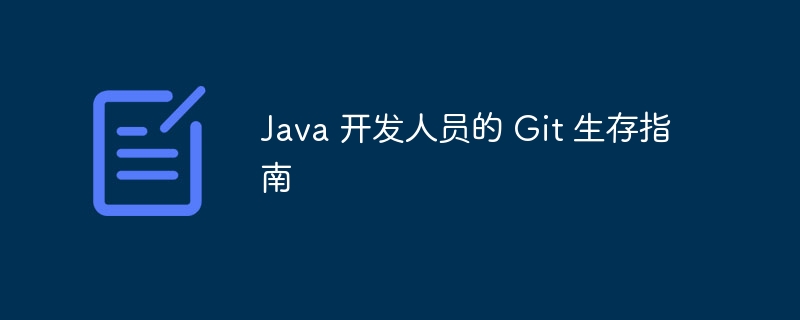

php editor Apple has written a detailed Git survival guide for Java developers. Java developers play an important role in the Git version control tool. Mastering Git operating skills is crucial for team collaboration and code management. This guide will help Java developers make better use of Git tools, improve development efficiency, avoid common mistakes, standardize the team development process, and make version control easier and more efficient.
Basic knowledge
Best Practices
Submission Management
Branch Management
Collaborative Workflow
Tools and Tips
Git Client: Provides a command line or graphical user interface to interact with Git repositories. Git Extensions: Enhance Git functionality such as code review, version management history, and project management. GitLab CI/CD: Automate the build, test, and deployment process to simplify the software development lifecycle. GitHub Actions: Similar to GitLab CI/CD for automated code building and testing.
Advanced Theme
troubleshooting
git mergetool or merge strategy to resolve conflicts. git reflog to restore lost commits. git fsck to check for data corruption and repair if necessary. in conclusion
Mastering Git is crucial for Java developers. By following best practices, leveraging tools and techniques, and addressing advanced topics, individuals and teams can collaborate effectively, maintain code quality, and accelerate the software development life cycle.
The above is the detailed content of A Java Developer's Git Survival Guide. For more information, please follow other related articles on the PHP Chinese website!
 How to clean up the computer's C drive when it is full
How to clean up the computer's C drive when it is full
 fil currency price real-time price
fil currency price real-time price
 How to defend cloud servers against DDoS attacks
How to defend cloud servers against DDoS attacks
 How to download Binance
How to download Binance
 How to buy and sell Bitcoin on Huobi.com
How to buy and sell Bitcoin on Huobi.com
 How to open iso file
How to open iso file
 What are the functions of computer networks
What are the functions of computer networks
 how to hide ip address
how to hide ip address
 How to solve problems when parsing packages
How to solve problems when parsing packages




